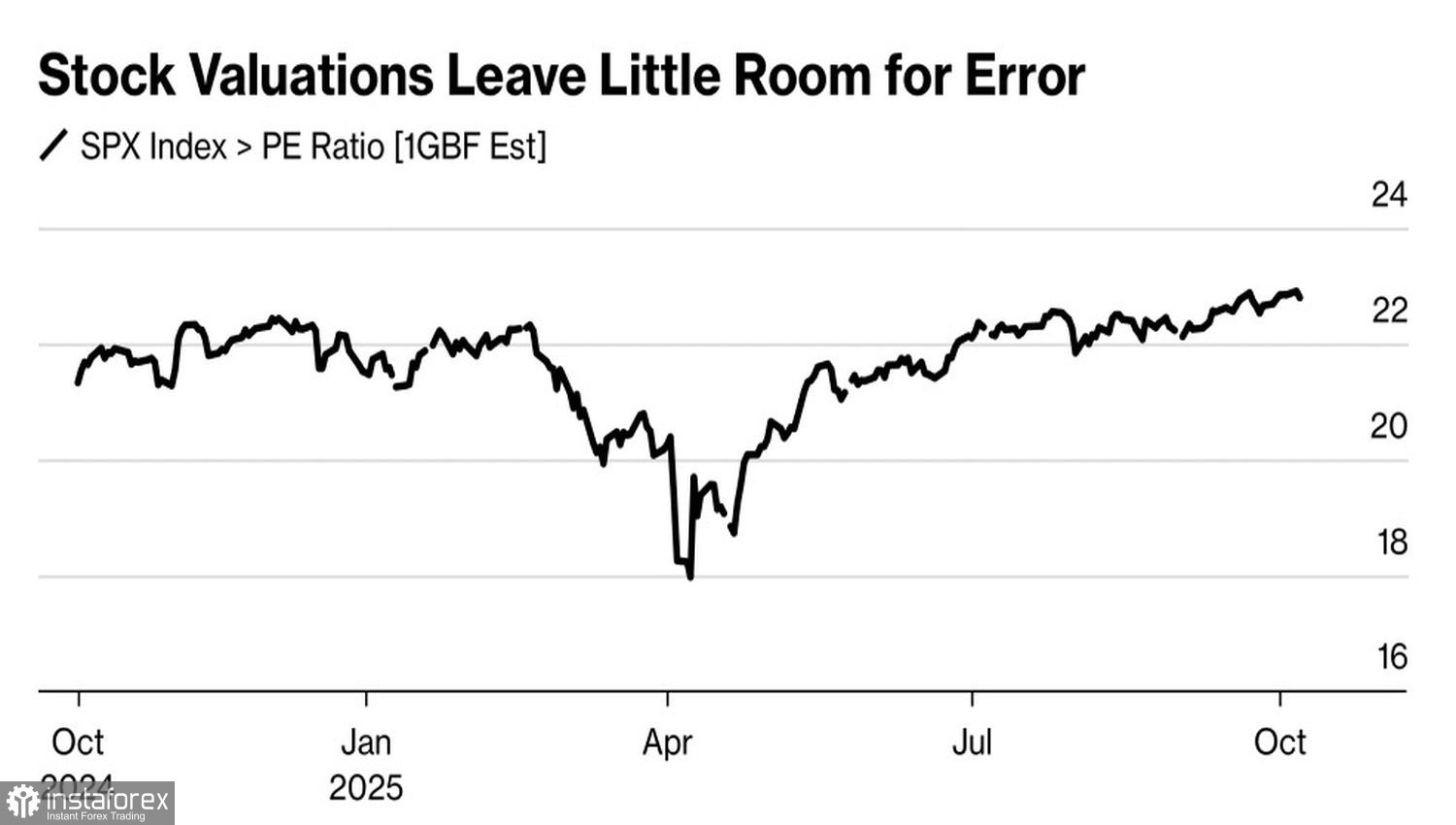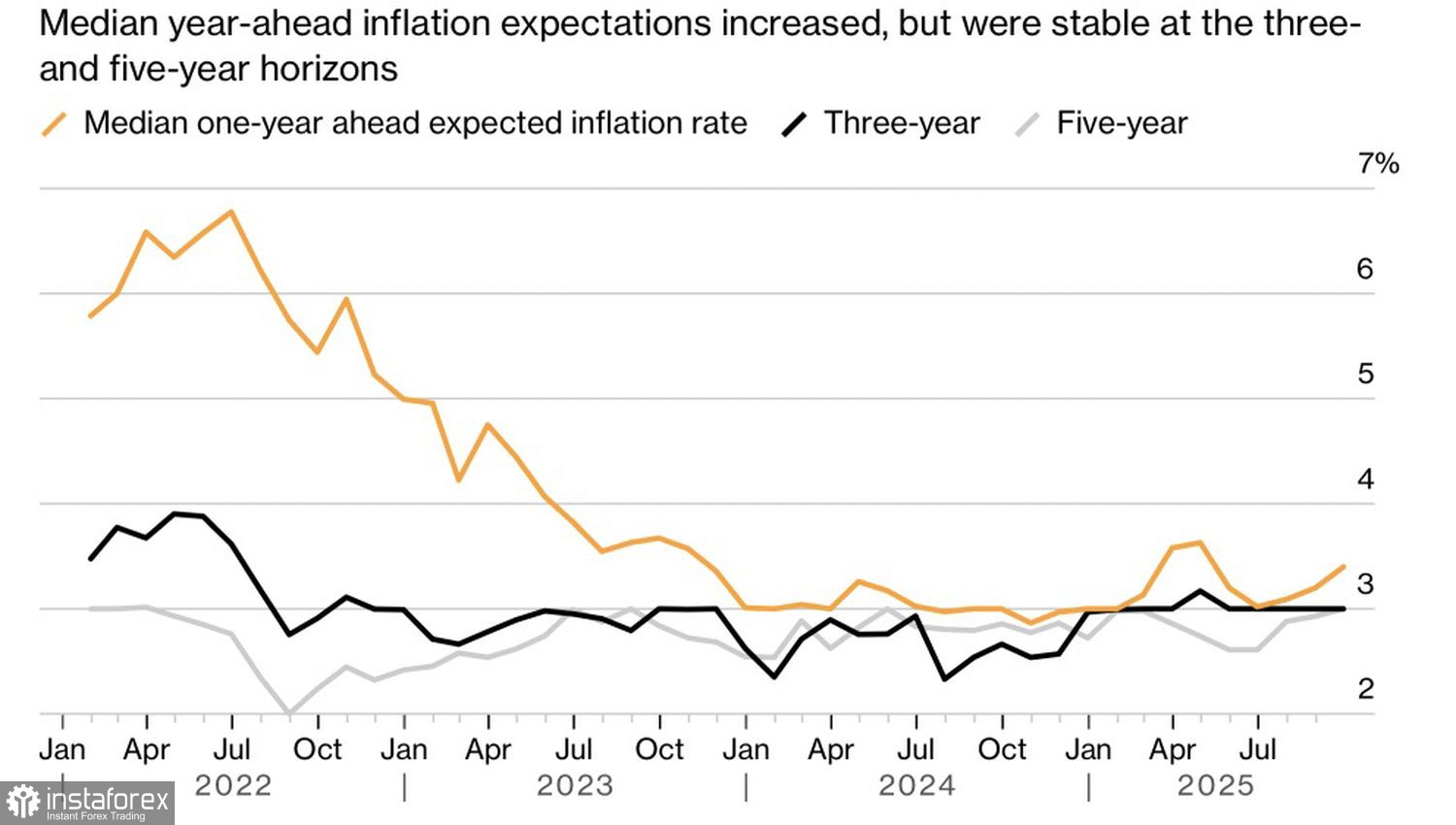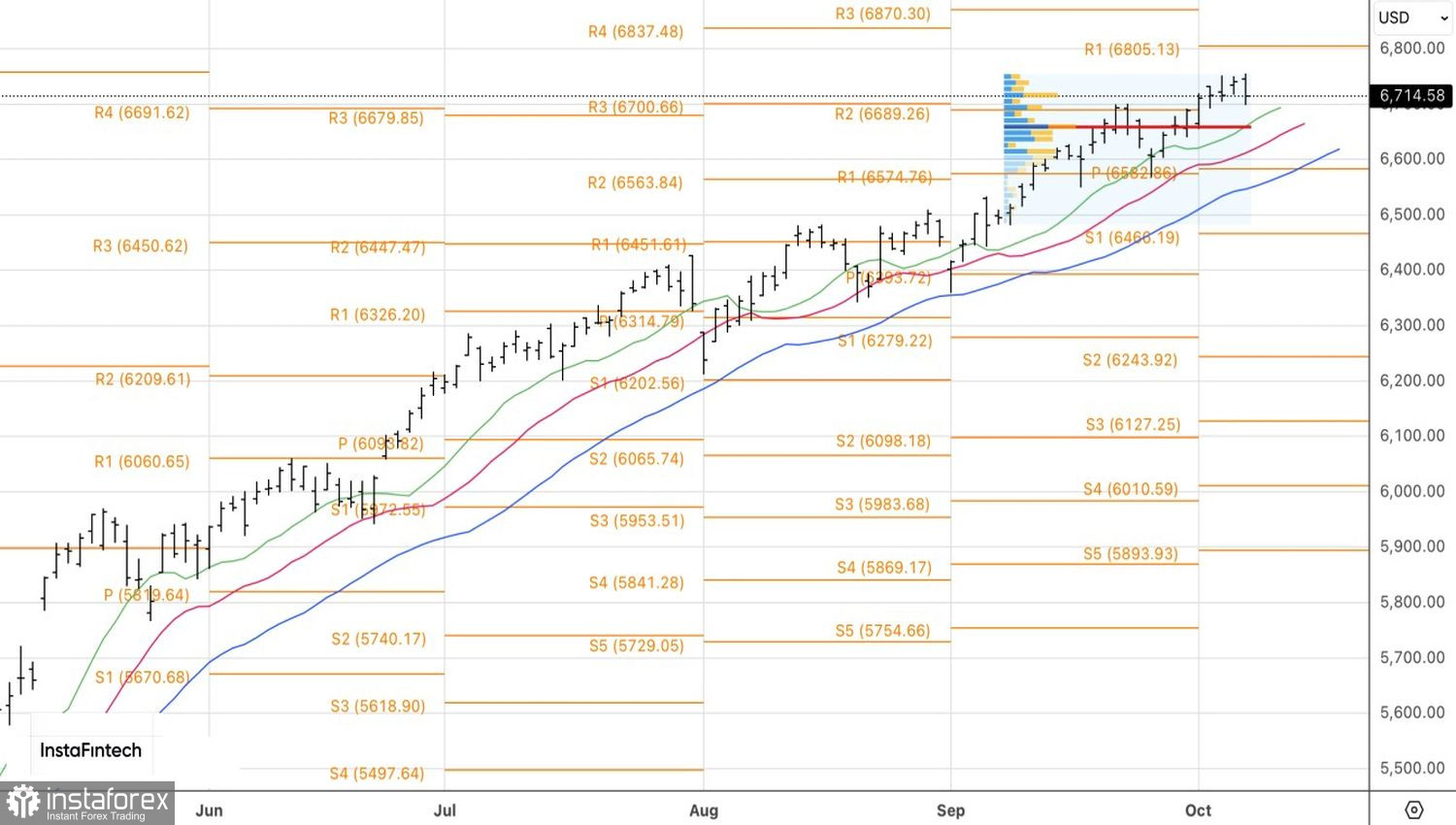Where it is thin, it is prone to tearing. Investors are starting to ask the tough questions: what kind of real profits are technology companies generating from artificial intelligence? And when the answer turns out to be "barely detectable" — so small they need to be examined under a microscope — panic begins to set in. Disappointing results from Oracle regarding its partnerships with OpenAI and other companies triggered a sell-off in the S&P 500. Tesla added fuel to the fire with its underwhelming unveiling of new versions of its top-selling vehicles.
With such a high level of concentration in the U.S. stock market, the broad index is forced to react to any news from tech giants or the so-called "Magnificent Seven." Unsustainable fundamentals, especially in valuations, eventually lead to portfolio rebalancing. The price-to-earnings (P/E) ratio is now trading at levels as extreme as during the dot-com bubble 25 years ago.
S&P 500 P/E Ratio Dynamics

A period of consolidation in the S&P 500 seems not only natural but healthy after the index logged its 32nd record high of the year. The ongoing U.S. government shutdown is also weighing on sentiment, and investors are now starting to doubt whether the Federal Reserve will cut interest rates twice in 2025 as previously expected. If even a single cut is delayed or skipped, that disappointment is likely to reverberate throughout the equity market. The current level of the S&P 500 already reflects expectations for federal funds rates to fall to 3.75% by year-end.
In that context, recent warnings by Minneapolis Fed President Neel Kashkari — specifically about the risk of reigniting inflation if monetary policy is eased too aggressively — and rising consumer inflation expectations reported by the New York Fed added momentum to the ongoing correction in the S&P 500.
U.S. Consumer Inflation Expectations

When greed dominates, even the smallest catalyst — the flap of a butterfly's wings — can trigger a storm. Euphoria has gripped the U.S. equity market recently. According to Goldman Sachs, bullish sentiment among clients has returned to its highest level since December. Barclays' tracker shows a market "flush with exuberance," and Bloomberg's sentiment index has entered its "manic zone."
Euphoria rarely ends well. The butterfly effect could cause the S&P 500 to decline much more sharply than expected. Even so, the "buy-the-dip" strategy hasn't gone anywhere, and the fight between bulls and bears could ultimately lead to a phase of consolidation. In that case, October may live up to its reputation as the most volatile month for the broad equity index.

As I see it, the longer the shutdown continues, the more sensitive the U.S. stock market becomes to it. Delayed data releases create uncertainty, which in turn forces the Fed to be cautious — taking away one of the bulls' most important weapons.
From a technical perspective, the S&P 500 just completed a pullback after an inside bar formed on the daily chart. Despite this, the uptrend remains intact. Pullbacks from resistance levels at 6680, 6660, and 6585 appear to be good buying opportunities.
 English
English 
 Русский
Русский Bahasa Indonesia
Bahasa Indonesia Bahasa Malay
Bahasa Malay ไทย
ไทย Español
Español Deutsch
Deutsch Български
Български Français
Français Tiếng Việt
Tiếng Việt 中文
中文 বাংলা
বাংলা हिन्दी
हिन्दी Čeština
Čeština Українська
Українська Română
Română

